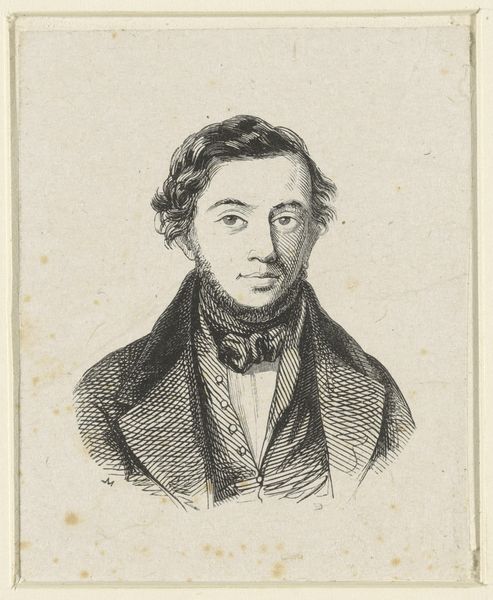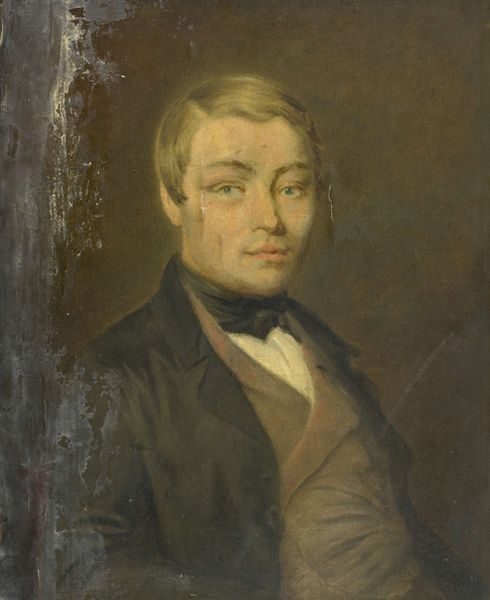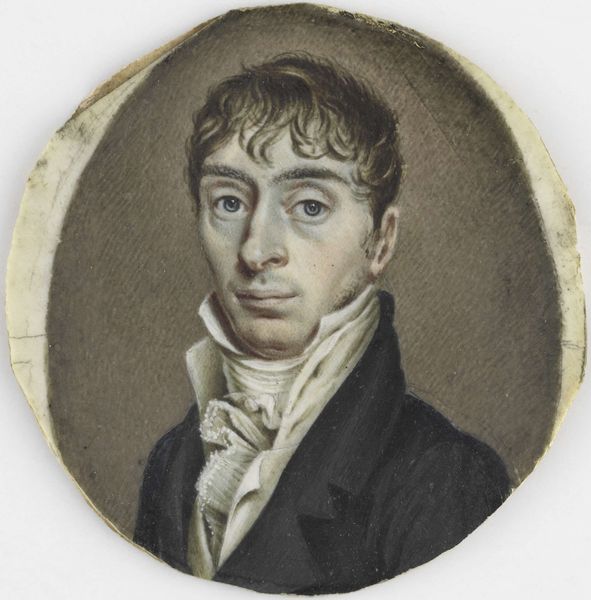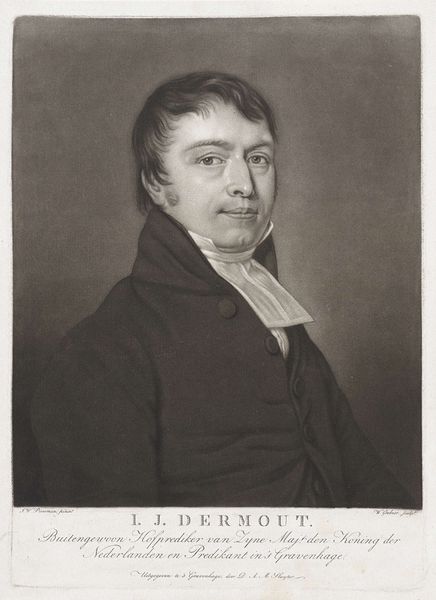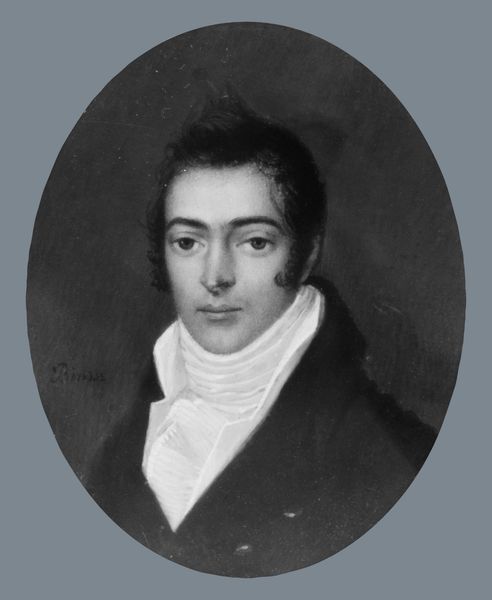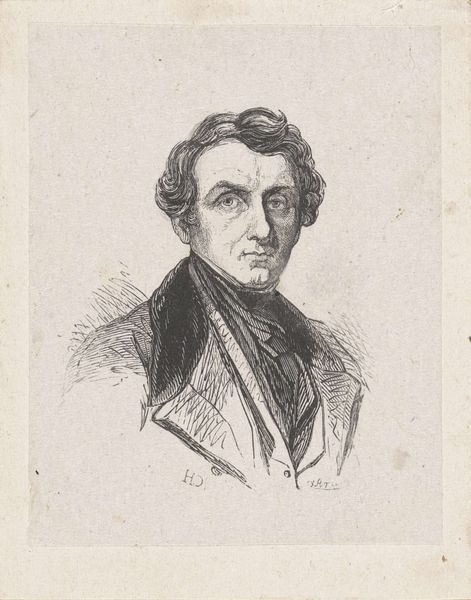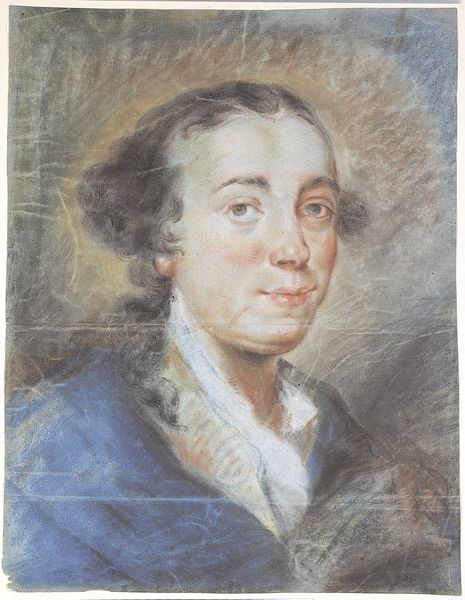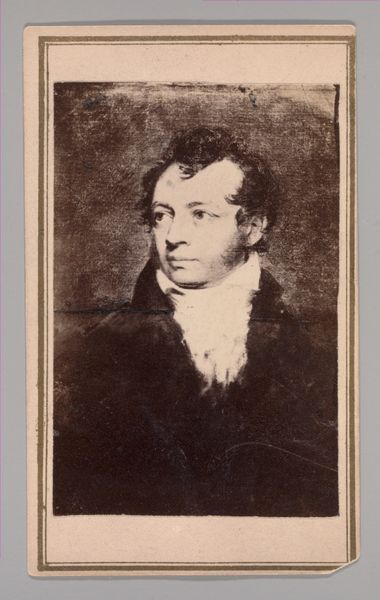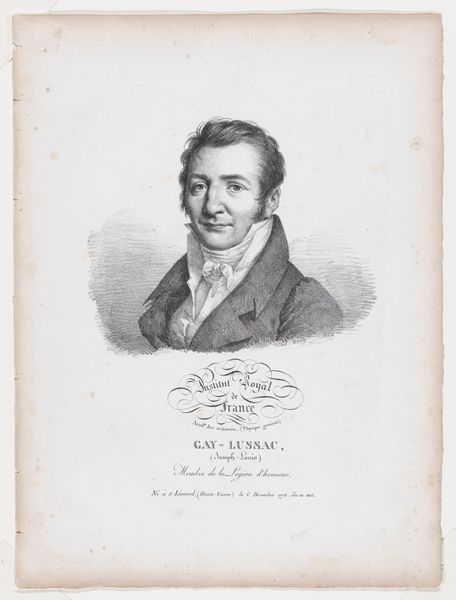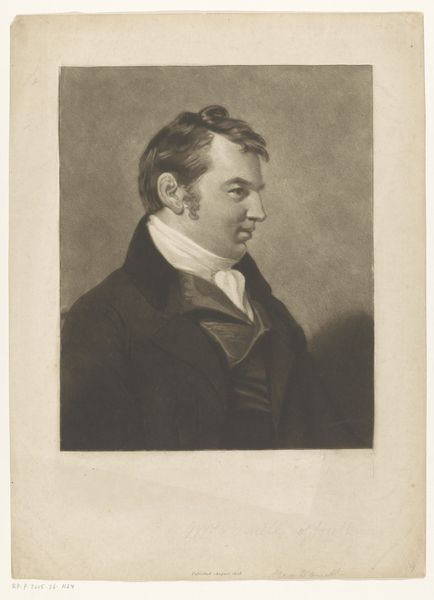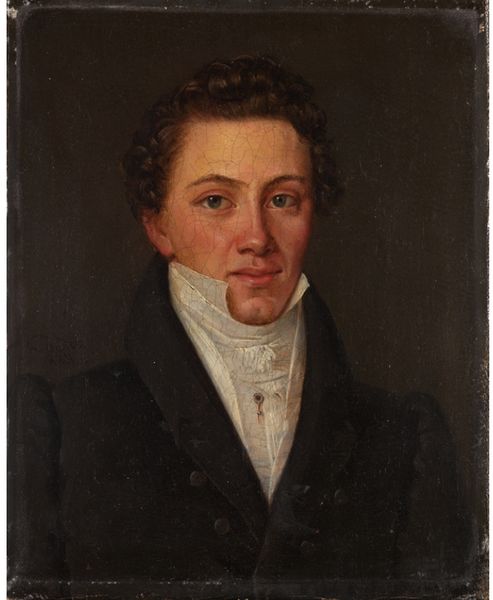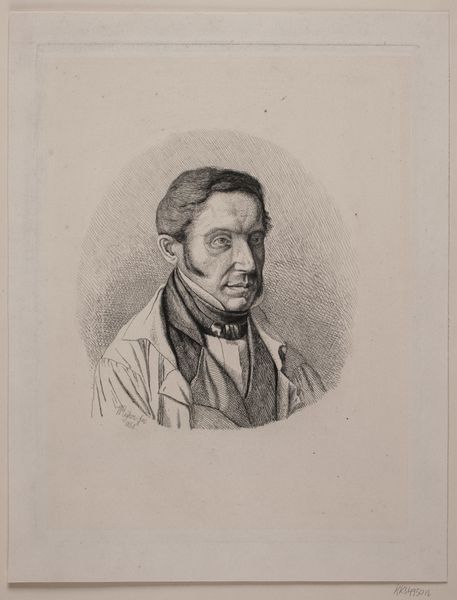
Portræt af skolelærer Hans Jensen Visby (1777-1870), fra Aagerup, Ramløse sogn. 1841 - 1844
0:00
0:00
drawing, painting, gouache, watercolor
#
portrait
#
drawing
#
painting
#
gouache
#
watercolor
#
romanticism
#
realism
Dimensions: 230 mm (height) x 185 mm (width) (bladmaal)
Curator: Before us we have P.C. Skovgaard’s “Portræt af skolelærer Hans Jensen Visby (1777-1870), fra Aagerup, Ramløse sogn.” from between 1841 and 1844. The work combines gouache and watercolor on paper and depicts the aforementioned schoolteacher. Editor: It strikes me as quite melancholic, despite the straightforward pose. There’s a stillness, but the colors—particularly that gray, heavy background—lend it a subdued air. Curator: The application of watercolor and gouache, especially, adds to that quality. Notice how the pigment is built up in thin, translucent layers. This technique of layering and glazing creates a luminosity that, while subtle, impacts our perception of the sitter’s presence. Editor: And I wonder about the process—the making of the paper, the sourcing of the pigments, the conditions in which Skovgaard worked. Were these locally sourced materials? Did the creation of the artwork reflect broader social dynamics or access to resources for artists like Skovgaard and his subject at that time? The tangible qualities are quite evident—the tooth of the paper is apparent to the touch—but also it raises questions of accessibility and social representation. Curator: I understand that you're directing your attention to those considerations. Yet, the carefully constructed composition also suggests particular relationships and symbolism, beyond just accurate representation. Look closely at the detail of the subject's gaze and bearing; the work subtly conveys his essence through painterly realism while highlighting certain intellectual attributes. The subject's bearing seems self-assured and serious. Editor: Perhaps the somber mood reflects broader social concerns, tensions within Danish society regarding class and education in the 19th century, when literacy became important, but at times out of reach for working-class citizens. To me, the subject almost seems stoic— resigned. That palette suggests the working-class garments worn to set the mood. Curator: So we can read this artwork at various levels of investigation. While a Formalist reading foregrounds the inherent structure and compositional strategies, your view illuminates those social conditions under which it was made and within which Visby himself labored. Editor: Indeed. By reflecting on those details, it might enable an exploration that exposes deeper cultural and economic layers influencing its very conception. Curator: Precisely. That contrast alone, and those dual ways of interpreting the artwork's essence, gives the piece such appeal.
Comments
No comments
Be the first to comment and join the conversation on the ultimate creative platform.
